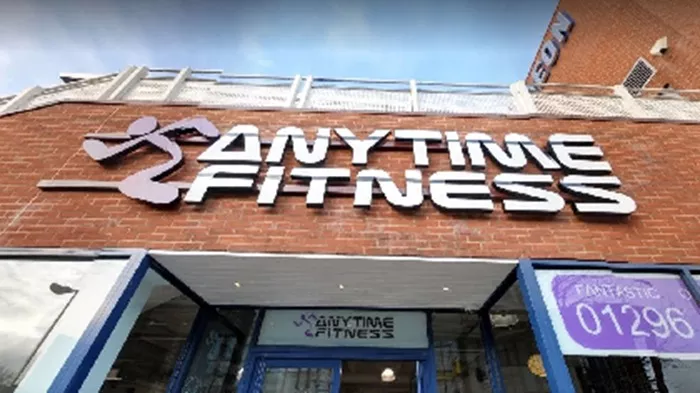Belly fat is a common concern for many people, and it’s often one of the most difficult areas to target. While cardiovascular exercise is often recommended for fat loss, there are several other effective ways to burn belly fat without engaging in traditional cardio exercises. This article will explore various strategies, including diet, strength training, lifestyle adjustments, and specific exercises that can help you reduce belly fat without the need for running on a treadmill or cycling.
Belly Fat and Its Impact on Health
Before delving into the methods for burning belly fat without cardio, it’s important to understand what belly fat is and why it’s a problem. Belly fat, also known as visceral fat, is the fat that accumulates around your abdomen and internal organs. Unlike subcutaneous fat, which lies just under the skin, visceral fat can surround vital organs such as the liver, pancreas, and intestines. This type of fat is associated with numerous health risks, including heart disease, type 2 diabetes, and certain cancers.
Belly fat is particularly challenging to lose because it tends to be the last place the body sheds fat from. While spot reduction (targeting fat loss in specific areas) is not possible, there are ways to reduce overall body fat, which will, in turn, help you lose belly fat. Reducing belly fat is not just about improving aesthetics; it’s about improving your overall health and reducing the risk of chronic diseases.
Diet: The Foundation of Belly Fat Loss
When it comes to burning belly fat without cardio, diet plays a crucial role. In fact, what you eat has a much greater impact on fat loss than exercise alone. A well-balanced, calorie-controlled diet can help you lose fat efficiently. Here are some dietary strategies that can help you burn belly fat without the need for cardio exercise:
1. Create a Calorie Deficit
To lose fat, you must consume fewer calories than your body needs for energy, creating a calorie deficit. When you’re in a calorie deficit, your body begins to use stored fat as fuel, which leads to fat loss over time. While cardio can help burn calories, reducing your calorie intake through diet is the most direct way to create a deficit.
To create a sustainable calorie deficit, focus on portion control and choose foods that are nutrient-dense but lower in calories. Avoid highly processed, sugary foods and instead, focus on whole foods such as vegetables, lean proteins, whole grains, and healthy fats. A general rule of thumb is to aim for a moderate calorie deficit of 300-500 calories per day to lose weight at a steady pace.
2. Eat More Protein
Increasing your protein intake can significantly boost fat loss and help you target belly fat more effectively. Protein has a thermogenic effect, meaning that your body burns more calories digesting protein than it does digesting fats or carbohydrates. Additionally, protein helps increase feelings of fullness, reducing hunger and the temptation to overeat.
Incorporating high-protein foods into your diet, such as lean meats, fish, eggs, legumes, and dairy products, can help promote fat loss while preserving muscle mass. Studies have shown that a higher protein intake can lead to greater fat loss, particularly in the abdominal area.
3. Reduce Refined Carbs and Sugars
Refined carbohydrates, such as white bread, pasta, and sugary snacks, can contribute to fat gain, particularly around the belly. These foods cause spikes in blood sugar, leading to increased fat storage. Instead, focus on whole grains, vegetables, fruits, and legumes, which provide more fiber and help regulate blood sugar levels.
A diet high in sugar and refined carbs is also associated with an increase in visceral fat. By reducing your intake of processed sugars and focusing on healthier carbohydrate sources, you can significantly reduce belly fat without the need for cardio.
4. Incorporate Healthy Fats
Contrary to popular belief, consuming healthy fats can actually help you lose belly fat. Healthy fats, such as those found in avocados, nuts, seeds, and olive oil, promote fat burning and help you feel full longer. These fats can also help regulate hormone levels, including those that are involved in fat storage.
However, it’s essential to consume fats in moderation. While healthy fats can be beneficial, they are still calorie-dense, so portion control is key. Incorporating healthy fats into your diet, along with protein and fiber, can help you feel satisfied and prevent overeating.
5. Stay Hydrated
Proper hydration is essential for overall health and fat loss. Drinking enough water can help boost your metabolism, improve digestion, and reduce bloating. Often, people mistake thirst for hunger, leading to unnecessary snacking. By staying hydrated, you can prevent this confusion and help curb cravings.
Additionally, drinking water before meals can help you feel fuller, which can prevent overeating. Aim for at least 8 cups of water a day, and consider drinking green tea, which contains antioxidants that may help increase fat burning.
Strength Training: Building Muscle to Burn Fat
Strength training is another effective method for burning belly fat without cardio. While cardio exercises can help you burn calories during the workout, strength training helps build muscle, and muscle tissue burns more calories at rest than fat tissue. This means that by increasing your muscle mass, you will naturally increase your resting metabolic rate, making it easier to burn fat over time.
Strength training can be done in many forms, including bodyweight exercises, resistance band training, and weightlifting. When you focus on full-body strength training exercises, you engage multiple muscle groups, increasing the total number of calories burned and promoting overall fat loss, including belly fat.
1. Compound Exercises
Compound exercises are multi-joint movements that work several muscle groups at once. Examples include squats, deadlifts, push-ups, lunges, and bench presses. These exercises are particularly effective because they engage large muscle groups, which requires more energy and burns more calories.
By including compound exercises in your routine, you not only build muscle but also elevate your heart rate, contributing to fat loss. For example, squats target your quads, glutes, and core, while deadlifts work your hamstrings, back, and core. This combination of muscle engagement and calorie burning makes compound exercises a powerful tool for burning belly fat without cardio.
2. Core Exercises
While you cannot spot-reduce belly fat, strengthening your core can help tighten and tone the abdominal muscles, giving you a more defined midsection. Core exercises such as planks, Russian twists, leg raises, and bicycle crunches engage the muscles in your abdominal area, helping to build muscle and improve posture.
When you combine core exercises with strength training, you promote overall fat loss, and the muscle development in your core will help give your belly a more toned appearance. Perform core exercises at the end of your strength training routine or as part of a circuit.
3. Progressive Overload
To see continuous fat loss and muscle growth, it’s important to challenge your muscles by increasing the intensity of your workouts over time. This concept is known as progressive overload. To apply progressive overload, gradually increase the resistance or weight you use during strength training exercises, or increase the number of sets or repetitions.
By consistently challenging your muscles, you promote fat loss and muscle growth, which helps burn belly fat even when you’re not actively working out.
Lifestyle Adjustments for Belly Fat Reduction
In addition to dietary and exercise strategies, certain lifestyle changes can also contribute to belly fat loss. Here are some key adjustments to make:
1. Get Enough Sleep
Sleep plays a crucial role in fat loss and overall health. Lack of sleep can disrupt the balance of hormones that regulate hunger, leading to overeating and weight gain. Additionally, poor sleep can increase levels of cortisol, a stress hormone associated with fat storage, particularly around the belly.
Aim for 7-9 hours of sleep per night to support fat loss and promote overall well-being. Creating a bedtime routine, reducing screen time before bed, and managing stress can all help improve the quality of your sleep.
2. Manage Stress
Chronic stress can lead to an increase in cortisol levels, which can contribute to fat storage, especially in the abdominal area. Finding effective ways to manage stress, such as through meditation, yoga, deep breathing exercises, or spending time in nature, can help reduce cortisol levels and support fat loss.
Incorporating stress management practices into your daily routine can not only help with fat loss but also improve your overall quality of life.
3. Stay Consistent
Consistency is key to achieving long-term fat loss. While it may take time to see noticeable results, sticking to a healthy diet and regular strength training routine will gradually help you burn belly fat without cardio. It’s important to be patient and persistent, as sustainable fat loss occurs over weeks and months, not days.
Conclusion
Burning belly fat without cardio is entirely possible by focusing on a combination of diet, strength training, and lifestyle adjustments. By creating a calorie deficit, eating a balanced diet rich in protein and healthy fats, and engaging in regular strength training exercises, you can target belly fat and improve your overall body composition. Additionally, managing stress, improving sleep quality, and staying consistent will help ensure that you stay on track toward achieving your fat loss goals. While cardio can be a helpful tool, it is not the only way to burn belly fat, and these alternative strategies can lead to effective and lasting results.
Related Topics

































